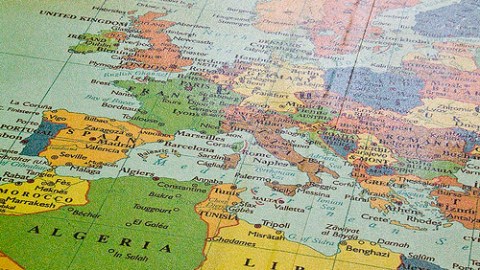Can We Import Our Exports? Three Quick Questions

There’s a refrain amongst the din of school reform talk today that goes something like this: We could learn a great deal from the educational systems of other countries. Finland comes to mind as a country whose model we’re asked, as a country, to examine and perhaps emulate.
However, did you know that the U.S. has exported its own education model overseas, in some cases quite successfully? It’s carried out in hundreds of international schools around the globe. International schools have elementary, middle and secondary programs that look and behave structurally like their American counterparts in many ways. For instance, many have teacher professional learning communities and you’re likely to find a curriculum coordinator in most schools. They also affiliate themselves with U.S. teacher and schooling associations. For instance, the European League of Middle Level Educators (ELMLE, the middle school association for Europe) is an affiliate of the U.S. Associate for Middle Level Education (formerly the National Middle School Association).
And while international schools have adopted the U.S. model nearly wholesale, there are differences in the intentional schools. I wondered if anything the international schools are doing is worth thinking about here in the U.S. Last week, at the 2012 ELMLE meeting in Prague, I posed three quick questions to Caitlin Krause. Caitlin is a writer, artist and educator living in Brussels, Belgium. She teaches English at St. John’s International School; it’s her second year overseas. When Caitlin was little, she was a student at the Anglo-American school in Moscow, Russia, before returning to America to attend middle and high school.Her writing has appeared in publications such as Avocet, The Aurorean, The Homestead Review, The Providence Journal and Her Mark datebook. She has just authored a new book of photography, poetry and prose reflecting a year of living in Europe.
Q. Caitlin, what, after a year of teaching in a European international school, would you suggest teachers and principals in the States strive to keep in mind?
A. I would suggest that everyone in education recognize that the fundamental aspect of a school is its community. It’s an integrated set of relationships, and these relationships are the most important aspect of fostering learning. International schools seem to understand this, because it’s a world of fluctuations, so establishing the foundation of a strong community, one that respects supportive relationships between and among students, teachers, faculty, parents and the surrounding culture, is of critical importance.
Q. What have you learned about shaping productive conversations about standards?
A. A friend and I were talking yesterday about standards, just musing about the many meanings and interpretations of the word. Standards are necessary; every quality school sets measurable goals and works toward them. Educational standards are critical, especially in a world with so many transitions and fluctuations. Still, in a competitive academic arena with so many pedagogical terms floating around (such as “standards”), one needs to carefully ask: What do these terms mean? How will our applications of these terms help us to accomplish goals? Does every member of our community understand these goals and play a role in helping to define them?
Q. Anything else?
A. We live in an exciting age of exponential growth; thus, we need systems that are clear and flexible, ready to adapt to the fluctuating needs of the time. In ways, this demands a great deal of the modern teacher: we must be as inventive, curious and energetic as our students. There is no better “job” in the world, and it takes a complete investment of heart and soul, I firmly believe!
Photo Credit: (CC) Flickr user andresrueda





